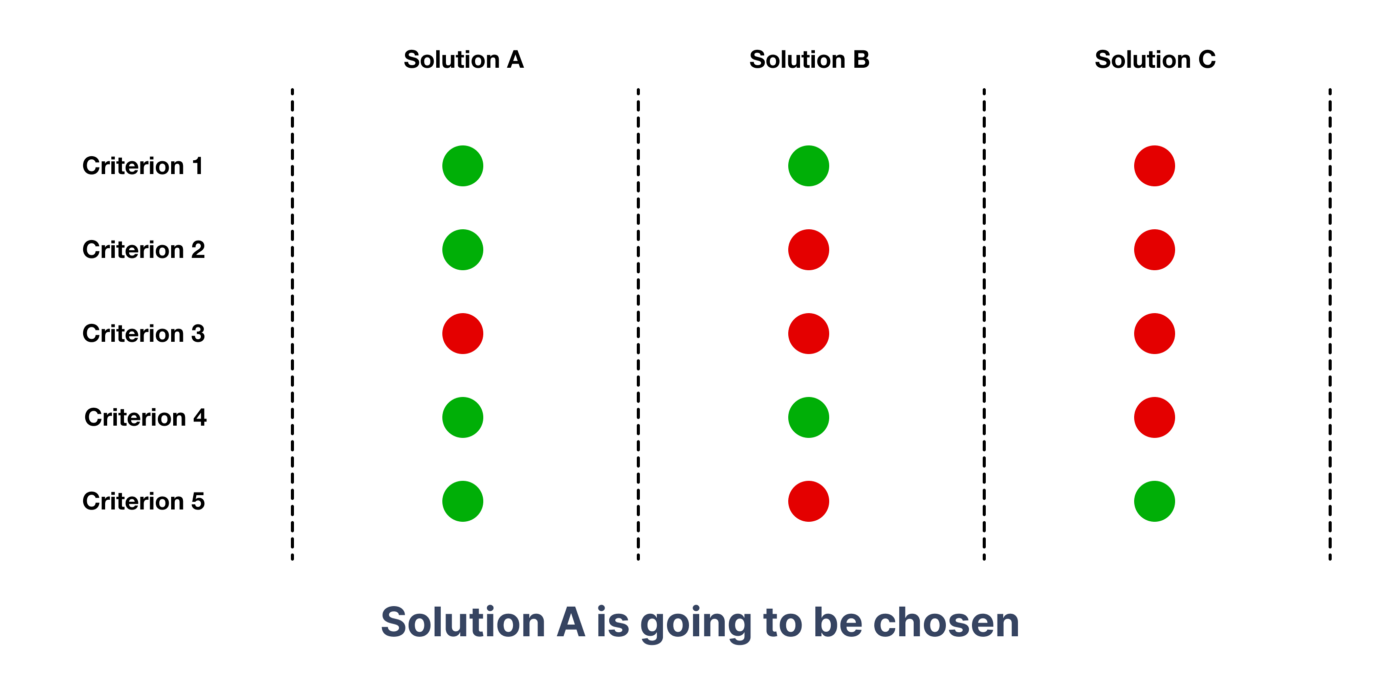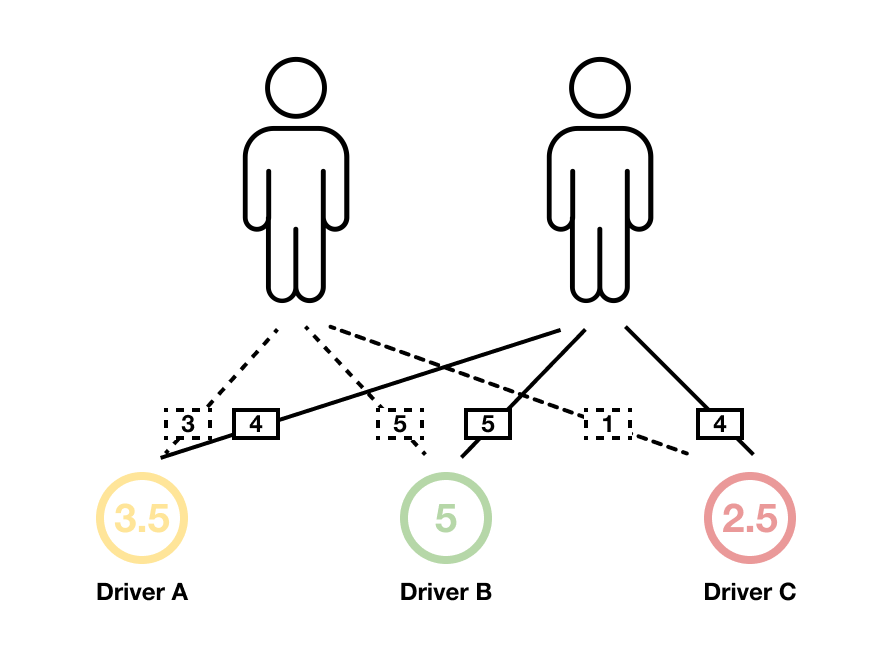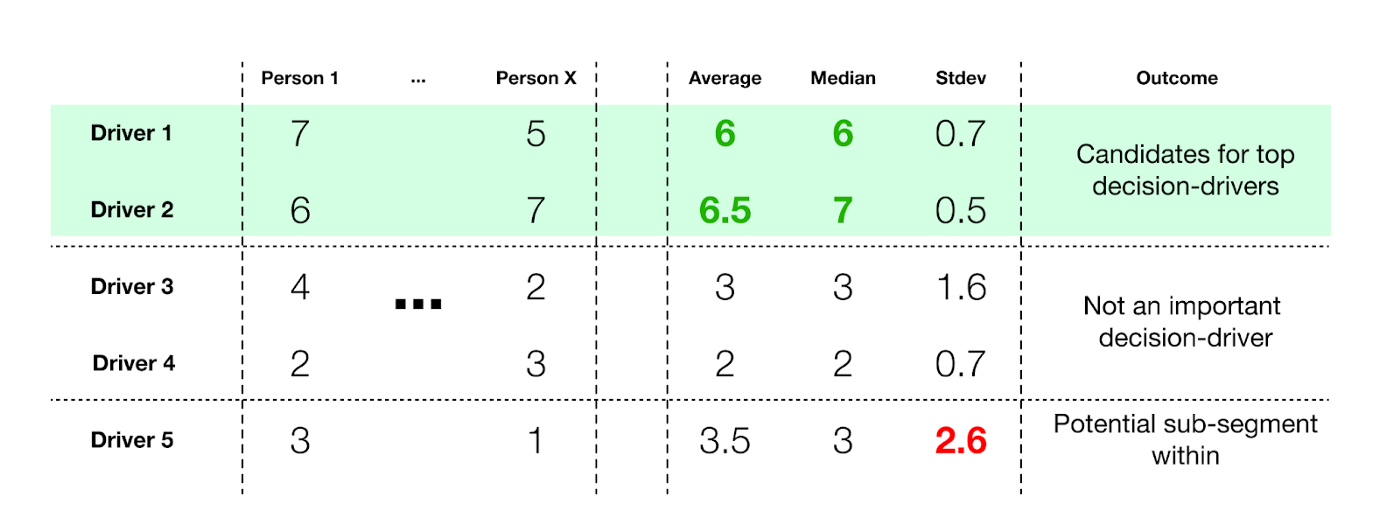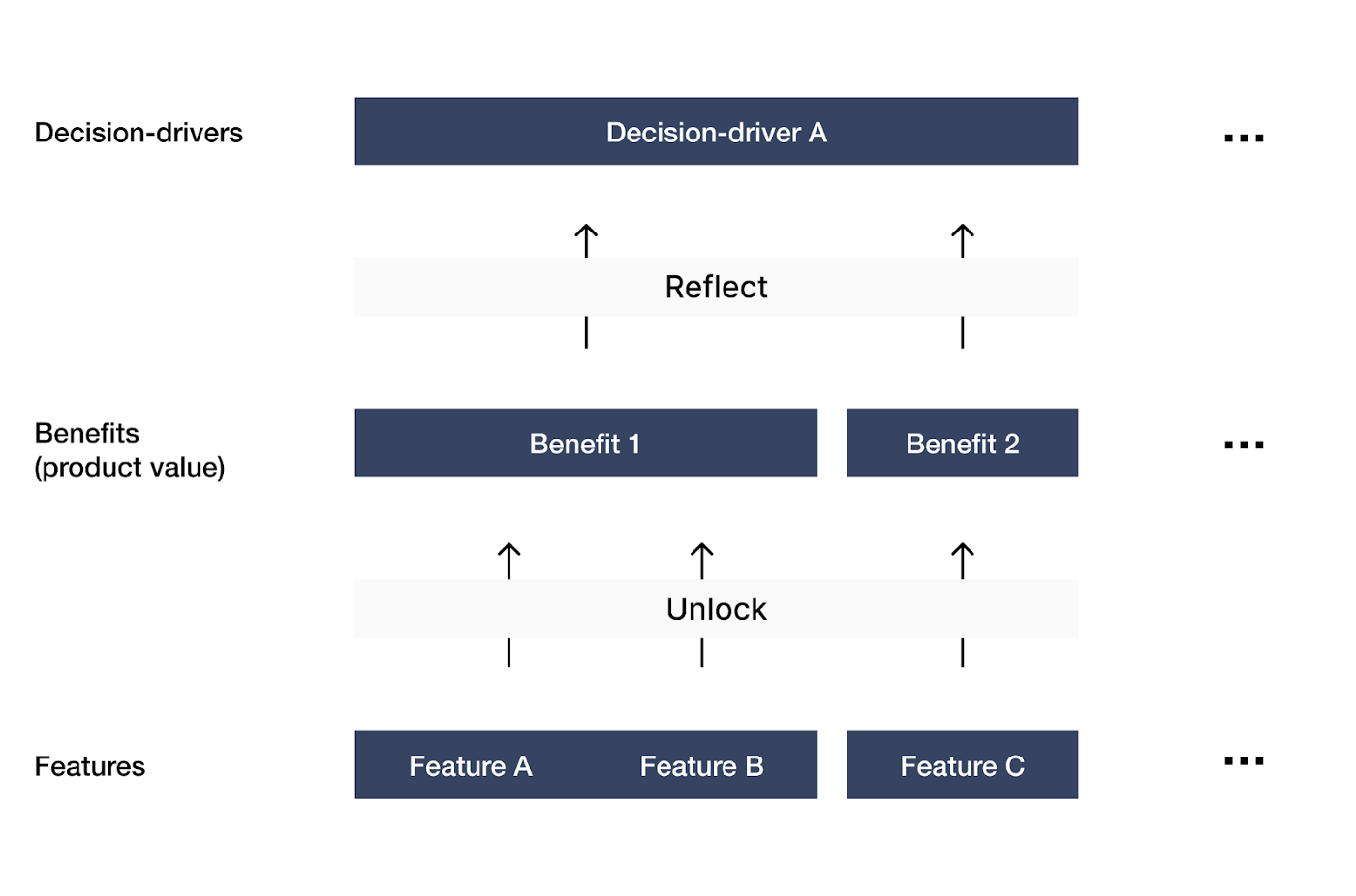In part one, we outlined the steps to get a data-driven positioning strategy and value proposition, and we went over the preparations you’ll need to make before you start your customer research.
In this part, I’ll walk you through building a structure for the research, outlining the necessary steps, and finally helping you analyze your results to build a data-informed vision and position for your product in the marketplace.
Note: This part will only make sense if you’ve read part one, which you can read here if you haven’t already.
We'll cover:
- Identifying buyers' key decision drivers
- Ranking those drivers and getting context
- Prioritizing the drivers to give us a plan of action
Step 2: Discovering the decision-drivers
In product management, we run multiple interviews about problems, solutions, and contexts. We use multiple methodologies or even hire research agencies to do the footwork for us. But while we interview to uncover problems and their solutions, interviewing to discover specific decision-drivers is rarely the top priority.
From here on, I’ll give you a high-level overview of the research process for a product that hasn’t seen the light of the market yet (although you can use the same process for an existing product too) but is in an existing product category.
This step is about digging wide, not deep. The first thing you need to do (apart from the customer qualification process for the interview, screeners, etc.) is to understand the drivers of a decision you care about.
When selecting something, either for business or personal use, we’re guided by specific motivations, needs, and criteria. Sometimes those criteria become explicit (when we create a list of pros and cons), sometimes they don’t (when we decide to buy a shiny new thing, there are still things, like ‘my friends have it, so I should too’ driving the decision-making process).

The idea is simple: ask questions about a past decision (completely new market categories will be discussed in part 3), to uncover all its drivers.
In this step, you’re just looking to uncover all those drivers, their context, their exact meanings, where they fit in the overall decision-making process, the people involved, the sources of information used, and who was consulted in interviews.
If you uncover too many decision-drivers in your interviews, you’ll need to filter the list to just the most important drivers. It’s painful to take your interviewee’s words and create a new decision driver by grouping things so if you can, get your interviewees to sign off on the groups you create.

Example questions for this stage:
- What was the first thing you did when researching [product category]?
- Who were the stakeholders in this selection process and what was their input / what did they care about the most?
- What made you select your current [product category] provider?
- How did you compare products from [product category]?
- Which products from [product category] have you considered in your research process?
- As a follow-up: How does the selected [product category] provider differ from all other providers?
- As a follow-up: What was the second-best solution as a [product category] provider? What made them a bit worse than your selected [product category] provider?
The outcome of your interviews is a distilled list of decision-drivers. They’ll differ across subjects, and different people will have different names for the same decision-drivers.
You’ll need to analyze your results and group similar decision-drivers together. This is a subjective step – you’ll have to do your interviews before you’ll understand if certain drivers were similar based on their contexts. You want to have no more than 10 or 15 decision-drivers for the next phase.
By this point we know:
- What our ideal customer profile (ICP) is for the product we’re considering building (or for the problem we’re trying to solve).
- What decision a representative of the ICP needs to make (or what question they are answering).
- Which role we should talk to.
- What the main decision-drivers are.
Step 3: Ranking the values that drive the decision & getting the context
With your list of decision drivers in hand, you can move on to phase two: identifying the top drivers, so you can build a product positioning strategy.
There are a couple of ways to go about ranking decision-drivers. The general idea is the same in both scenarios – you want to get a quantified rating of each decision driver.
You can ask, “Please rate each expression on a scale from one to seven, where one means ‘completely disagree’ and seven means ‘completely agree.’” Each decision-driver becomes part of a sentence: “In my process of selecting a product from [product category] [decision-driver(i)] was a key decision factor.”

Ask for ratings during phase 2 interviews…
The first way of getting to a quantified rank for each driver is to ask for ratings in your interviews. You’ll need to ask the same question about different decision drivers multiple times, while an interviewee has to sit and think about whether they agree with the statement or not.
Some interviewees will feel pressured; some will think for a long time – it’s a time-consuming process. The biggest benefit of doing it this way is you can encourage the interviewee to use the whole scale if you see they are only giving ones and sevens.

… or do a survey before the phase 2 interviews
If you find that your interviews run too long, you might want to run a survey before your second-phase interviews.
The questions stay the same, but you’re now presenting them to interviewees one or two days before the interview. They can think through the survey without any pressure, and you won’t have to spend time assigning ratings during the interview. You’ll have more time to ask questions about the context of the most important decision drivers.
Our goal at this stage is to understand the five most important factors for each interviewee, then get context on each of those.
Context is king – five dimensions of a decision-driver
Context helps you create a product vision that speaks directly to your target audience. The ratings help you understand what you need to learn. The context teaches you what the decision-driver means, how it’s uncovered, and how it’s measured. All those elements influence how you craft your product vision and positioning.
I suggest five dimensions you should learn about the decision-driver no matter what. You may sometimes feel a dimension is not relevant. Ask the question anyway. You might learn something insightful or surprising. Let the interviewee tell you the question doesn’t make sense instead of censoring yourself.

Example questions for each of the dimensions:
- Meaning: How do you understand [decision driver A]? And what wouldn’t be possible if [selected solution] didn’t have [decision driver A]?
- Indicators of presence: How did you know that [decision driver A] was present in your [selected solution]?
- Measurement: How did you measure how much [decision driver A] is covered / present with [selected solution]? Or How did you learn that [selected solution] will have an acceptable level of [decision driver A]?
- Comparison: How did you compare your selected solution with other solutions in the category in terms of [decision driver A]?
- Indicators of credibility: What made you confident that [selected solution] will cover [decision driver A] going forward?
When asking questions about these five dimensions, keep the question the same for all decision-drivers. Then you can gather context without biasing the research.
The more context you get, the easier you’ll find it to build a positioning strategy. You’ll know both the decision-driver and the meaning behind it. So you can craft messaging, collaterals, UI texts, emails, and in-apps with this context in mind.
At this point we know:
- What our ICP is for the product we’re considering building (or for the problem we’re trying to solve).
- What decision needs to be made by a representative of the ICP (or what question they are answering).
- Which role should we talk to.
- The main decision-drivers.
- The context behind each decision-driver.
Step 4: Calculate averages and medians for decision-drivers to get an overall top 5
Hopefully, your interviews will provide you with a wealth of new insights. Understanding decision drivers is crucial, but we still have a bit of work to do before going back to our ivory tower to craft product vision and positioning.
At this step, we need to calculate the average, median, and standard deviation scores for each decision-driver.
Average and median give you a prioritized list of drivers to use in your product vision and positioning. You’ll need to see how those drivers fit what you’re developing, where you can implement features to support your audience’s needs, and how to better appeal to the audience to signal that your product meets their needs.
Standard deviation is important too. It shows you how similar your responses are. If the standard deviation is high, it could mean you have different segments within your group of interview subjects. For example, some respondents think something's an important driver, while others don’t think it’s important at all.
Keep an eye on decision drivers with a medium or low average and/or median, but a high standard deviation. There may be an audience sub-segment to explore further. And, for that sub-segment, you could create new landing pages with messaging tailored to their decision drivers, if you understand that sub-segment well.

If you think, for example, that both B2C and B2B audiences could use your product, but you believe their decision process is different, you can calculate the above metrics for both audiences to see how your hypothesis holds up. If there are strong differences, you might want to cater to just one audience in the beginning. In B2B, there might also be huge differences in decision-drivers for companies of different sizes.
In addition to calculating the metrics and ranking the overall results, write a description of each value along with the context. If you’ve asked what the driver means for the customer, provide a brief description from a collection of answers supported by direct quotes you’ve gathered. Do the same for each question you’ve asked about a decision driver.
At this point we know:
- What our ICP is for the product we’re considering building (or for the problem we’re trying to solve).
- What decision needs to be made by a representative of the ICP (or what question they are answering).
- Which role should we talk to.
- The main decision-drivers.
- The context behind each decision-driver.
- The relative importance of each decision-driver.

Building a product vision and positioning from the research
At this step, you are going to start crafting a product vision and positioning from the information you’ve gathered.

Features enable you to describe the values of your product that reflect the decision drivers of your primary customer segment.
Select no more than three decision-drivers at this stage. The more you try to address, the fuzzier your product will be.
It’s probably obvious from the previous steps that your product vision should address the top decision-drivers. Your positioning should also reflect what makes your product more attractive than your competitors’ products.
Use decision-drivers as prioritization criteria for the features you’re considering building. If a feature doesn’t address important decision-drivers, you must have a very good reason for building it (technical necessity and basic expectations are good enough reasons).
It’s no less important to think about how you implement these features as many other solutions might have the same feature. But while the way it’s implemented in one solution addresses the decision-driver, the way it’s implemented in another misses the mark for the target audience.
With product vision and decision drivers in hand, you can decide how you’re going to position your product in the competitive landscape. Appealing to all decision drivers upfront may not be the best strategy. Doubling down on one to three decision drivers instead, with a couple more for optional support, is a better approach.
A word of caution: your positioning determines how the market perceives you Whatever you say about yourself in the market, whatever you write down in your internal strategy memos, if it’s not reflected in how customers understand your product and perceive its value, your positioning has not achieved its goals.
Customers will listen to your marketing messages but, in the end, they are the judge and jury of your position. So be consistent in both your marketing and in your product.
The ‘how’ on actually writing positioning or describing the product vision is a burden I will have to leave with you.
* * *
In the third and final chapter, we’ll be discussing how to scale this research and use it as your company grows, and we’ll see whether it’s applicable in all situations.
We let you do the talking. 📣
Consider yourself an expert in competitive intelligence or competitive enablement? Feel like this 🤐 and looking for a platform to get your voice out there?
Look no further. The Competitive Intelligence Alliance wants thought leaders like you to get in touch.
It's your insights we're after, so if you're strapped for time we'll have a quick chat, then write the article for you. 💯





.png?v=4fd2470976)